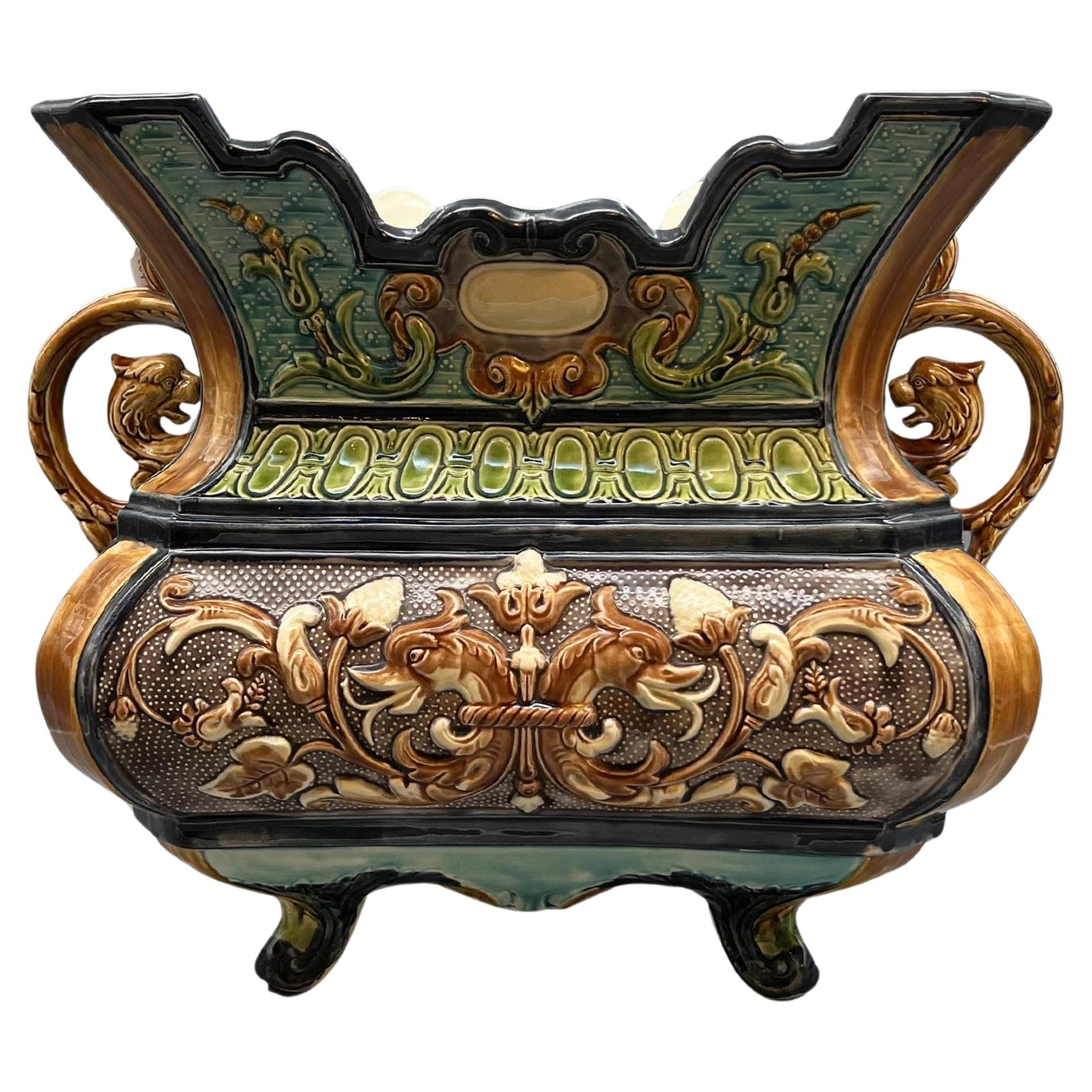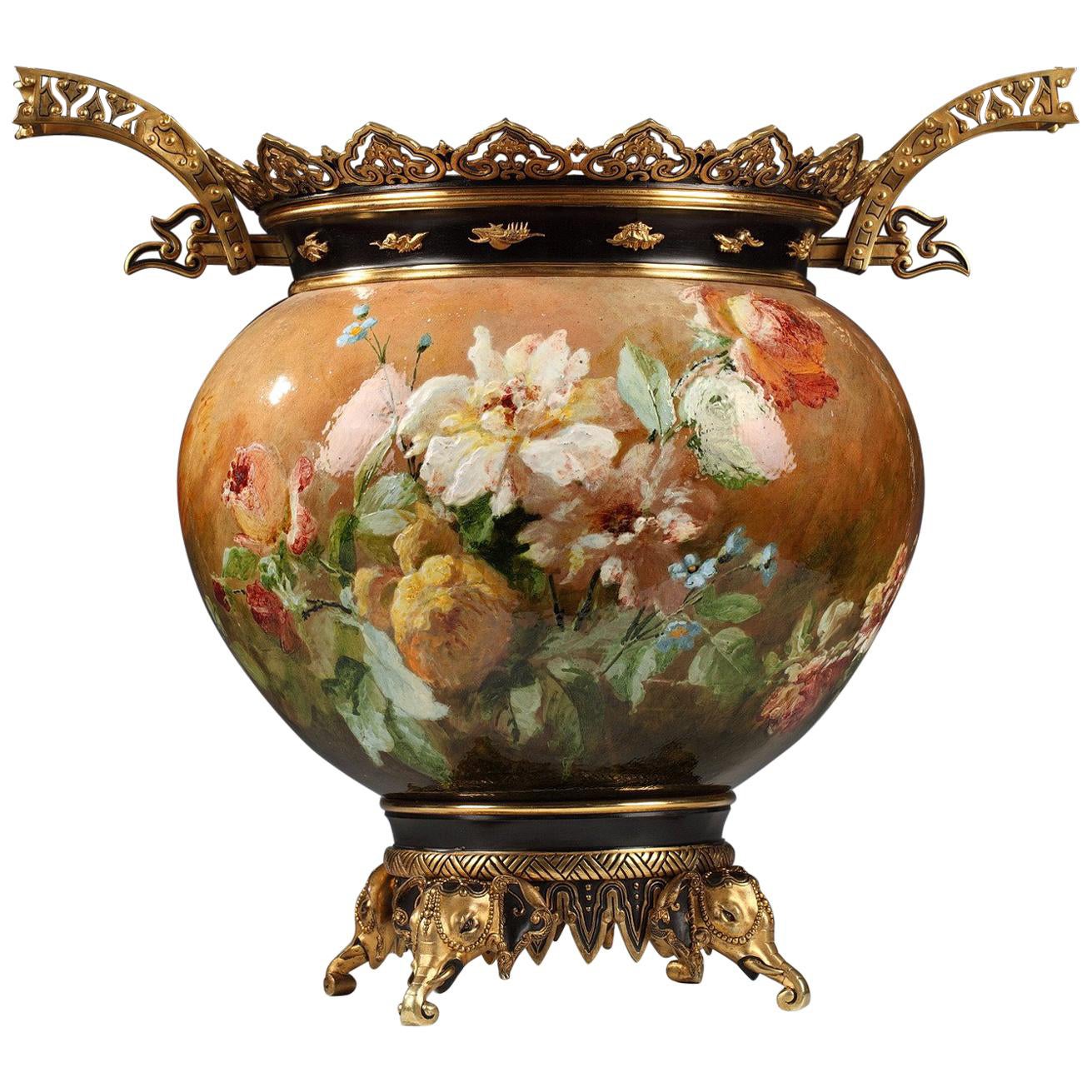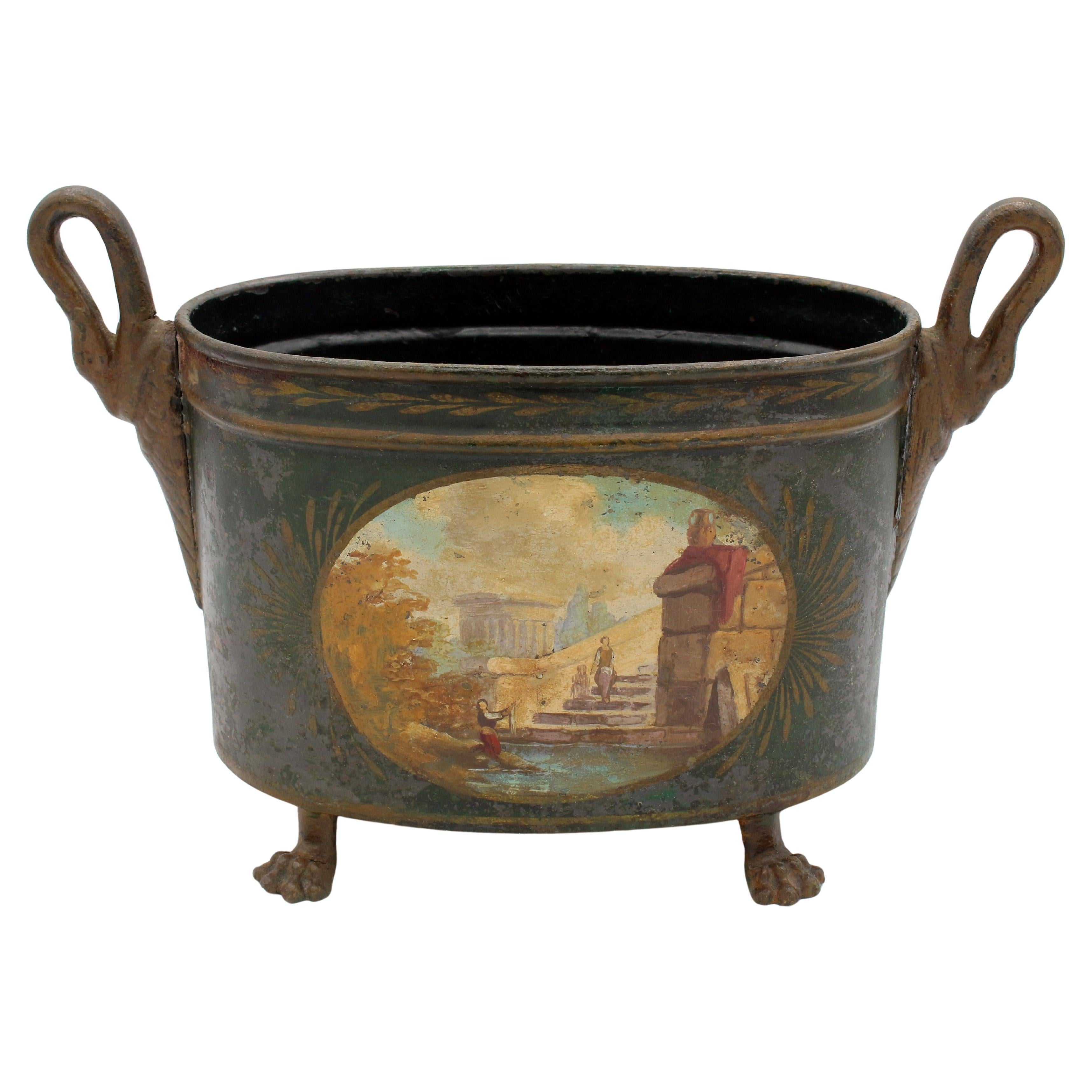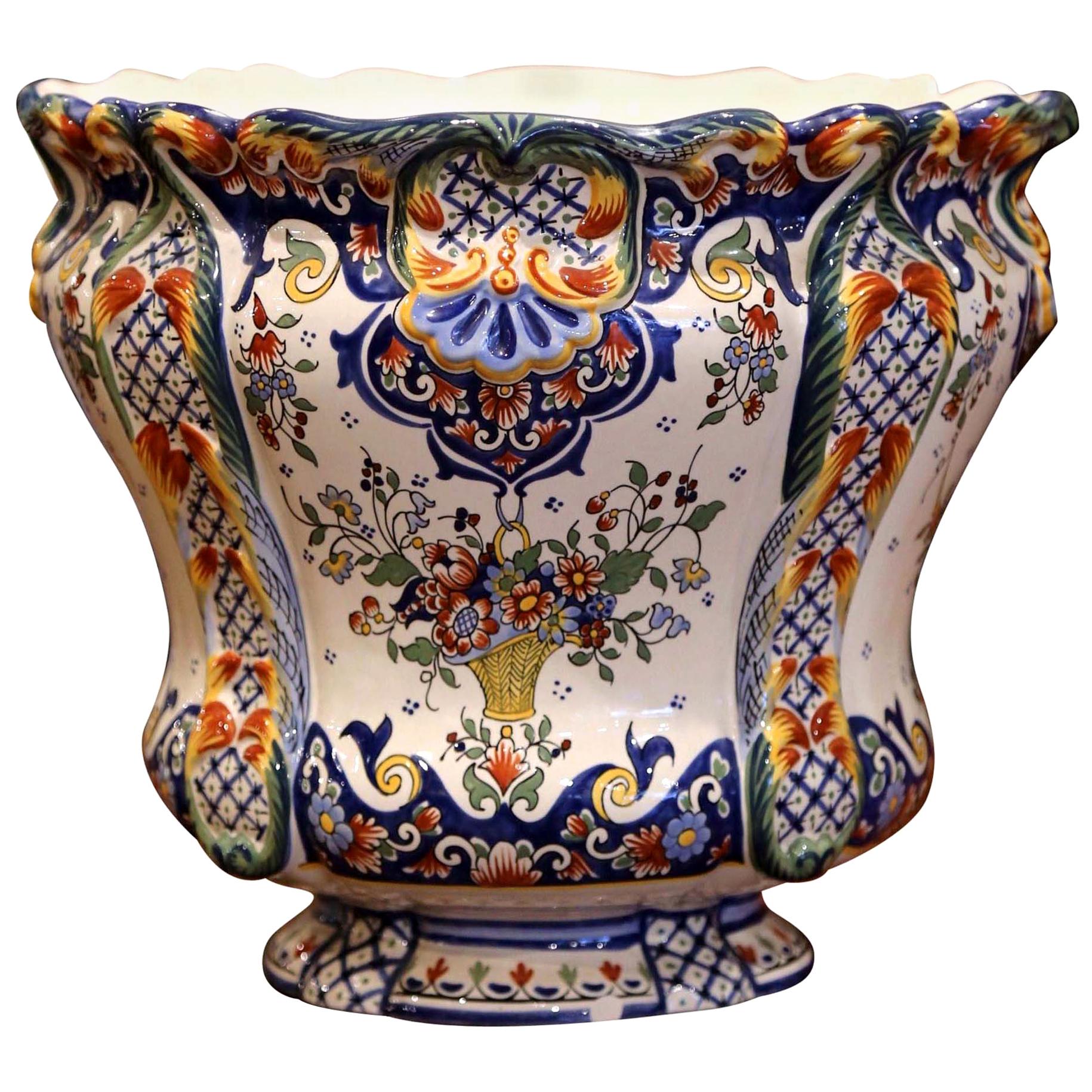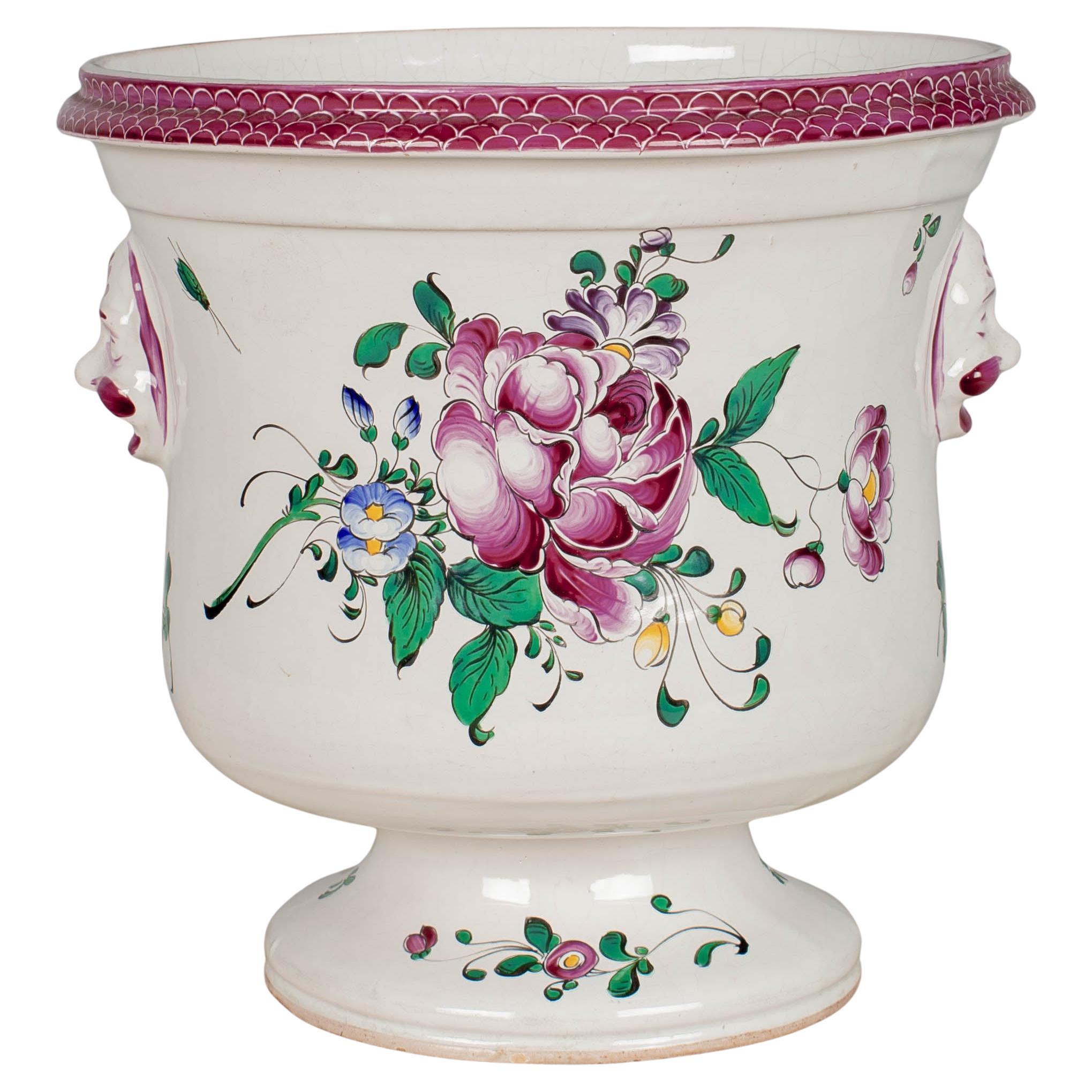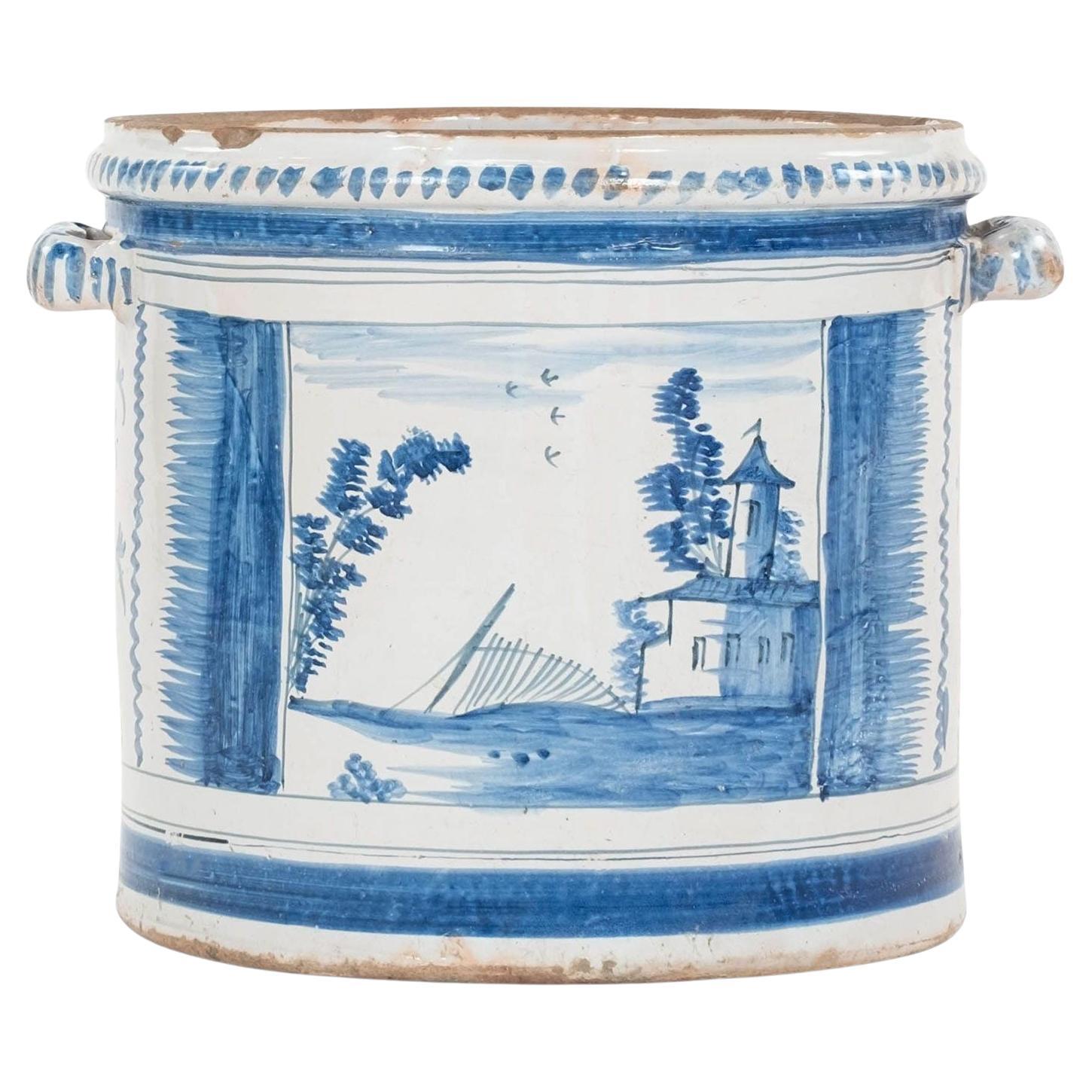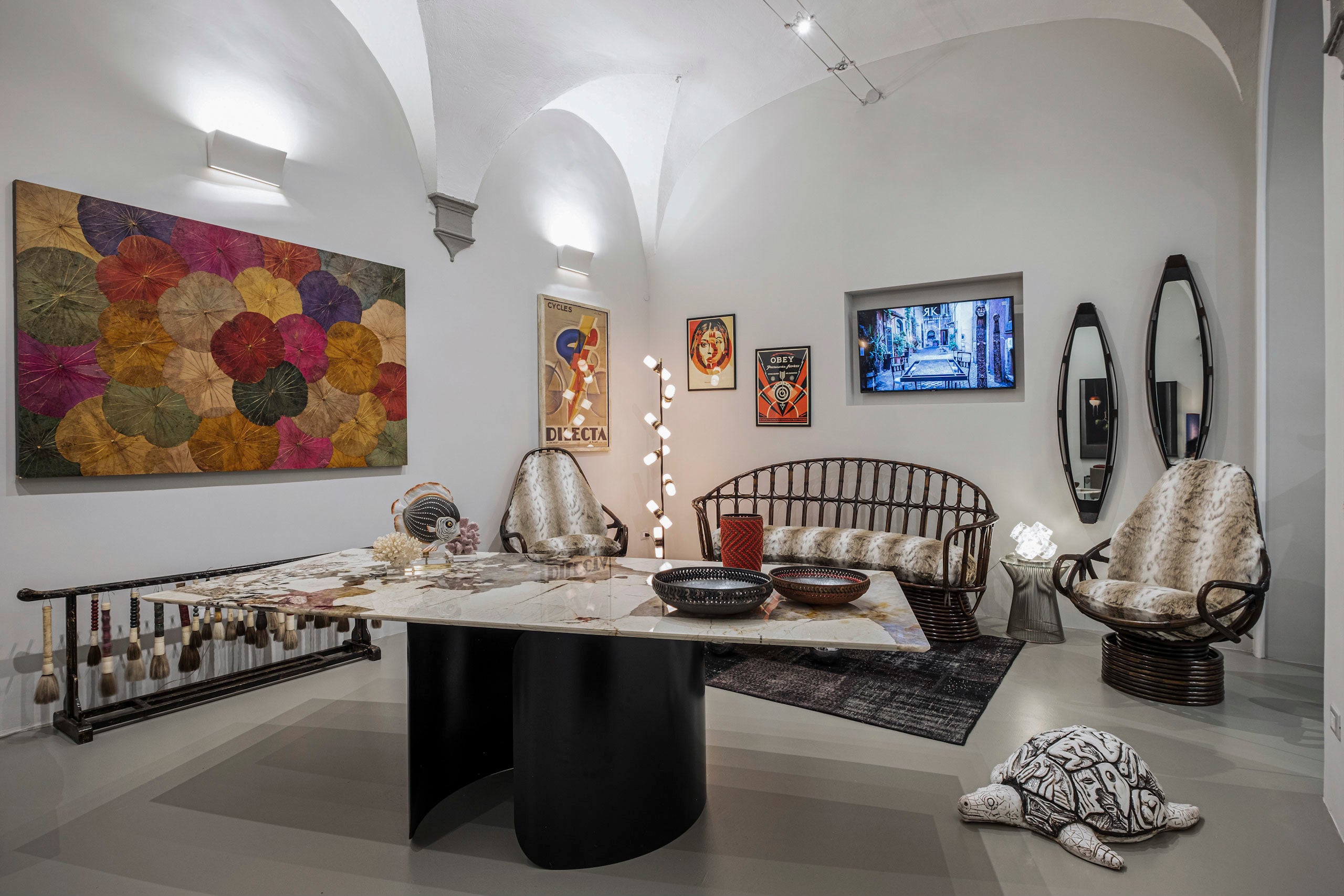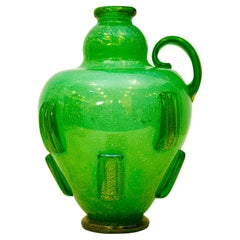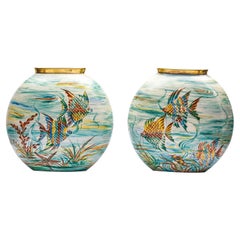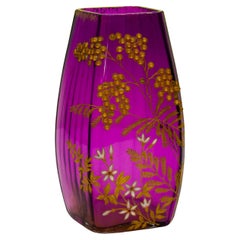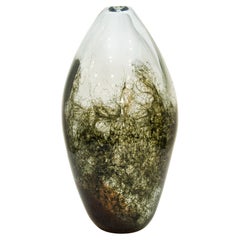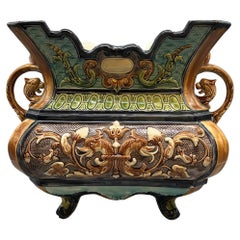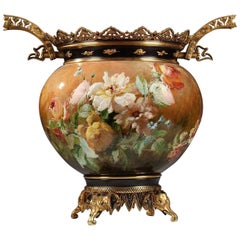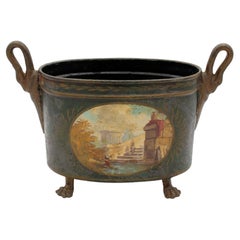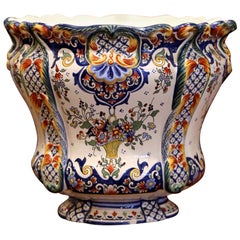Items Similar to Early 19th Century English Demilune Lusterware Bough Pot With Cover
Want more images or videos?
Request additional images or videos from the seller
1 of 10
Early 19th Century English Demilune Lusterware Bough Pot With Cover
$1,097.48
$2,224.7850% Off
£811.38
£1,644.8150% Off
€920
€1,86550% Off
CA$1,509.57
CA$3,060.1550% Off
A$1,677.98
A$3,401.5550% Off
CHF 879.56
CHF 1,783.0250% Off
MX$20,492.14
MX$41,541.1350% Off
NOK 10,980.78
NOK 22,259.9650% Off
SEK 10,330.87
SEK 20,942.4750% Off
DKK 7,003.94
DKK 14,198.2150% Off
About the Item
This demilune flower pot or bough pot for forcing springtime bulbs, is adorned with three landscape panels. Each panel, painted in pink lustre, depicts the same cottage in a pastoral setting from three different vantage points. Moulded into the top and bottom rims are acanthus leaves. Pieces in this shape, color and style have been attributed to the Hackwood company, and usually pieces like these, are not marked. William Hackwood & Son was an earthenware factory in Shelton, England, from 1818 until 1853. In addition to lustre ware, such as this pot, they made black basalt ware, cane ware and a variety of blue-printed dishes of excellent quality. This bough pot is complete with its three bulb holder lid. Should one wish, the lid can be turned over so the circular bulb holders don’t show above the surface of the pot. The pot is nine inches wide and slightly over seven inches high, with a depth of five and a half inches at its center point. The pot rests raised on spherical feet. The rustic panel decorations are in excellent condition and show no sign of wear. There is some wear to the lustre on the top edge and a small a small hairline crack on the upper half of the back of the pot. The glaze on the back of the pot, as is usual, has crackled. It is extremely rare to find a Staffordshire bough pot, from the early part of the 19th century, completely intact with its lid in such good condition.
- Attributed to:Hackwood & Co. (Manufacturer)
- Dimensions:Height: 7.29 in (18.5 cm)Width: 9.06 in (23 cm)Depth: 4.73 in (12 cm)
- Materials and Techniques:
- Place of Origin:
- Period:
- Date of Manufacture:circa 1830
- Condition:Wear consistent with age and use. As seen in the photos, there is a hairline crack on the upper half of the back of the pot. There is some minor wear to the lustre paint dividing the panels. Otherwise the piece is in exceptional condition for its age.
- Seller Location:Roma, IT
- Reference Number:1stDibs: LU6910230918302
KalaRara
KalaRara specializes in the design and production of one-of-a-kind and limited edition tables, consoles and wall decor. All of our pieces are made by hand, to the highest standards, by artisans and master craftsmen in our workshops. Utilizing sustainable materials like fragments of Murano glass and recyclable metals such as: stainless-steel, brass and iron, in a variety of finishes, each creation is a functional piece of art. In keeping with our philosophy of sustainable design we also offer a curated selection of antique and vintage pieces, some of which have been respectfully modified for contemporary living.
About the Seller
5.0
Vetted Professional Seller
Every seller passes strict standards for authenticity and reliability
Established in 2018
1stDibs seller since 2022
- ShippingRetrieving quote...Shipping from: Roma, Italy
- Return Policy
Authenticity Guarantee
In the unlikely event there’s an issue with an item’s authenticity, contact us within 1 year for a full refund. DetailsMoney-Back Guarantee
If your item is not as described, is damaged in transit, or does not arrive, contact us within 7 days for a full refund. Details24-Hour Cancellation
You have a 24-hour grace period in which to reconsider your purchase, with no questions asked.Vetted Professional Sellers
Our world-class sellers must adhere to strict standards for service and quality, maintaining the integrity of our listings.Price-Match Guarantee
If you find that a seller listed the same item for a lower price elsewhere, we’ll match it.Trusted Global Delivery
Our best-in-class carrier network provides specialized shipping options worldwide, including custom delivery.More From This Seller
View AllMurano Glass "Amphora" Pulegoso Vase by Napoleone Martinuzzi for Venini
By Napoleone Martinuzzi, Paolo Venini
Located in Roma, RM
Stunning green Pulegoso Murano glass "Urn" vase with applied glass decoration. The base, mouth, decorations and handle were rolled gold gold leaf during hot phase of creation, leavin...
Category
Mid-20th Century Italian Mid-Century Modern Vases
Materials
Murano Glass
$1,192 Sale Price
62% Off
Pair of Ceramic Vases by Guido Andlovitz for S.C.I. Levano
By Guido Andlovitz
Located in Roma, RM
Originally designed by architect, designer and artistic director Guido Andlovitz in 1936 for Società Ceramica Italiana Laveno, this pair of vases are indeed the rarest of finds. The vases were manufactured in 1942, as attested to by the marking "N - 42" on the base of each vase. The gold rims and aquatic scenes that surround each vase, are unique to each piece and were painted by hand in 1943. They are both signed by the artist "Miruccia". One of the vases has the words “Anni di Guerra” (Year of War) written on the base in reference to the Second World War .
Founded in Laveno in 1856 by Severino Revelli and some former employees of the "Richard" manufacturer in Milan. The "SCI" (Italian Ceramic Society) began its activity as a manufacturer of wall tiles and fine tableware. In 1883 it became a limited company and obtained its first successes at numerous national exhibitions. In 1895, Cavalier Luciano Scotti took over the company and, thanks to his intuition and his entrepreneurial skills, the factory grew substantially in a few years. In those years, some Liberty-style pieces designed by Giorgio Spertini, the author of noteworthy elegant "whiplash" creations, were created in the Laveno factory. In 1906 "SCI" presented numerous works at the International Exhibition of Decorative Arts in Milan. Other collaborators from the beginning of the century were Silvio and Piero De Ambrosis, Felice Palucco, Giancarlo Jacopini and the brothers Marco and Luigi Raggiori. However, it was in 1923 that, under the direction of Guido Andlovitz, the company reached the peak of its fame and in 1925 was a resounding success at the 2nd Monza Biennale. Andlovitz, who collaborated with the manufacturer for almost forty years, applied to the production process the principle of seriality, a concept also put into effect by Giò Ponti at "Richard-Ginori", adopting various types of decoration which, although moulded and decal stamped, still retained an undeniable elegance. In 1924 the "Società Ceramica Revelli" became a consortium with the "SCI", the partnership would continue until 1932 and saw Franco Revelli's company marketing pottery and table porcelain on behalf of "SCI". From 1925 porcelain and crockery began to appear in the factory's catalogs. In 1927 the company was present at the 3rd Biennial of Decorative Arts in Monza. Between the end of the 1920's and the beginning of the 1930's, the decorators Giuseppe Bellorini and Daniela Ferretto began to collaborate with the "SCI". As of 1932 the company managed two factories: that of Laveno, which, with over 1300 employees, produced strong pottery, tableware and artistic ceramics and the smaller factory of Verbano, which employed about 400 people and produced, in addition to ceramics for the electrotechnical industry, excellent table porcelain. The products were marketed in the company owned stores in Rome, Genoa and Naples. This was an initiative realised by Andlovitz himself. In the mid-thirties, the decorators Ada Corsi and Ida Fonini among others, collaborated with the "SCI". From 1936 to 1940 the artistic direction of the company was entrusted to the sculptor and modeler Angelo Biancini. In 1939 about 1300 people worked in the Laveno plant and in 1951 about 2300. In the years between the two wars among the collaborators of the factory were Sirio Tofanari...
Category
Vintage 1940s Italian Mid-Century Modern Vases
Materials
Ceramic
Ernest Baptiste Leveille Glass Vase with Gilt and Enamel Mimosas
By Ernest Baptiste Leveille
Located in Roma, RM
Rare and important vase in amethyst glass, exquisitely painted in gilt enhanced with enamelling and glass beads. The painted design of a Mimosa branch in bloom extends to three sides of the vase. The gilt painting is enhanced with glass beads and white enamel flowers.
Ernest-Baptiste Leveillé...
Category
Antique Late 19th Century French Art Nouveau Vases
Materials
Glass
$1,288 Sale Price
34% Off
Murano Glass Crepuscolo Vase by Ercole Barovier for Barovier & Toso
By Ercole Barovier
Located in Roma, RM
Rare and impressive "Crepuscolo" Murano glass vase from the late 1930's. Designed by the legendary Creative Director Ercole Barovier, employing his technique of inserting steel wool ...
Category
Vintage 1930s Italian Mid-Century Modern Vases
Materials
Murano Glass
Murano Glass "Bullicante" Vase Signed by Franco Moretti
By Franco Moretti
Located in Roma, RM
Mid-Century Modern iridescent transparent vase, signed Franco Moretti, Murano – Venice, 1970's.
Triangular-shaped vase with round base and bubble inclus...
Category
Vintage 1970s Italian Mid-Century Modern Vases
Materials
Murano Glass
$906 Sale Price
64% Off
Large Murano Crackle Glass Vase With Fused Faceted Glass Block Base
By Paolo Venini
Located in Roma, RM
This large unique Murano glass vase was made using the "Ghiachciato" technique, that gives the surface of the glass an irregular crackled appearance. The effect is created by submerg...
Category
Vintage 1980s Italian Mid-Century Modern Vases
Materials
Murano Glass
$1,431 Sale Price
68% Off
You May Also Like
Large glazed earthenware cachepot, Faïencerie d'Onnaing, Onnaing, France, circa
Located in Paris, FR
Large glazed earthenware cachepot with relief decoration of flowers, arabesques and griffins in cartouches.
Griffin-shaped handles.
The Onnaing earthenware factory was founded on Fe...
Category
Antique Late 19th Century French Planters, Cachepots and Jardinières
Materials
Earthenware
Earthenware Planter attr. to F. Barbedienne, France, Circa 1880
By Ferdinand Barbedienne
Located in PARIS, FR
Marked M.s.L. et G.S.
Planter in earthenware of Montigny-sur-Loing decorated with painted flowers (so-called "à la barbotine") inserted in a blanc and gilded bronze mount, attrib...
Category
Antique 1880s French Planters, Cachepots and Jardinières
Materials
Bronze
Circa 1815 French Tole Oval Cachepot or Jardiniere
Located in Chapel Hill, NC
Circa 1815 French tole oval cachepot or jardiniere. Exceptionally elegant, raised on painted bronze lion paw feet; swan handles. Each side hand painted w...
Category
Antique 1810s French Empire Planters, Cachepots and Jardinières
Materials
Metal, Bronze
Early 20th Century, French Hand Painted Faience Planter from Normandy
By Rouen
Located in Dallas, TX
This elegant, antique ceramic cachepot was crafted in Normandy, France, circa 1920. Round in shape, the Classic, colorful planter has a curly, scallop...
Category
Early 20th Century French Planters, Cachepots and Jardinières
Materials
Ceramic, Faience
French Lunéville Saint Clément Faience Cache Pot
By Luneville
Located in Winter Park, FL
French faience Lunéville Saint Clément cache pot, or planter. Hand-painted in typical floral design with vivid colors of pink, green, purple, blue and yellow on white ground. Sculptu...
Category
Mid-20th Century French French Provincial Planters, Cachepots and Jardin...
Materials
Ceramic, Faience
Nevers Faience 'Pot a Oranger'
Located in Houston, TX
Nevers Faience 'Pot a Oranger' adorned with painted farmhouse scenes and scrolled decoration in shades of blue (camaieu bleu). This circa 1780-1800 tin-g...
Category
Antique Late 18th Century French French Provincial Planters, Cachepots a...
Materials
Faience
More Ways To Browse
Antique Luster
Bulb Vase
Antique Flower Pot
Hand Painted Flower Pot
19th Century Pot Lids
Pink Lustre
Early 19th Century English Vases
Ceramic Pot Lids
Ceramic Pot With Lid
Pink Flower Pot
Lustre Vase Antique
Rare Flower Pots
Pink Cachepot
Black Demilune
Pink Antique Dishes
Luster Vases Antique
Antique Ceramic Flower Pots
English Demilune
